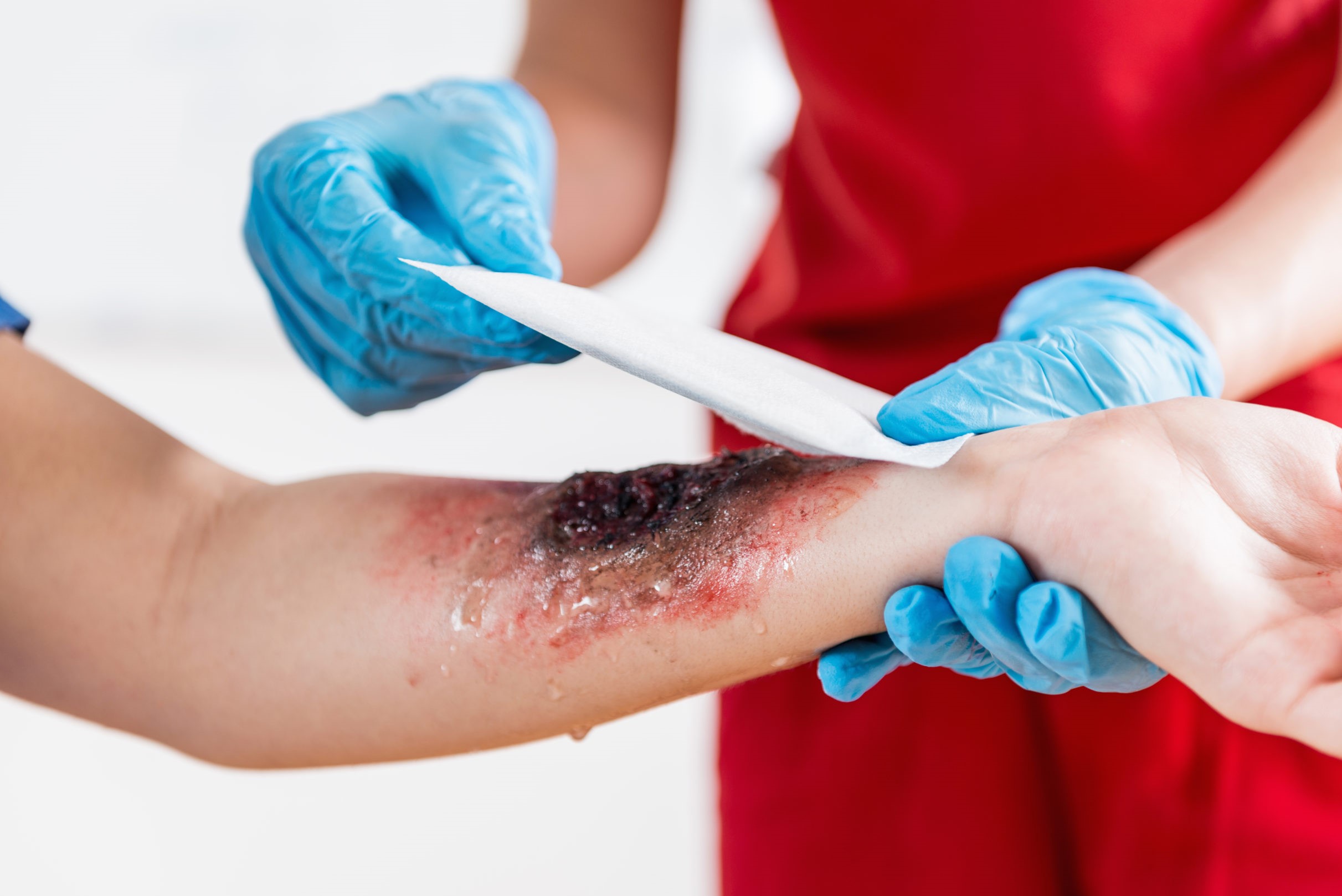
First Aid, treatment for Burns and Scalds
Burns and scalds are damages to the skin caused by heat that can sometimes lead to further health complications
While these injuries can be extremely painful, the performance of first aid can help relieve pain, reduce damage, and limit the risk of infection.
Mild-level burns do not require a hospital visit and can be treated at home.
Definitions – Burns vs Scalds
What are “Burns”?
Burns refers to damage to the tissues and skin cells that occurs after exposure to fire, heat, electricity, chemical, radiation, or friction.
Severe burns can damage the muscle and fat and even reach the bone if it is deep enough.
What are “Scalds”?
Scalds occur when a portion of the skin is exposed to a hot liquid or stream. It is often caused by coming into contact with hot bath water and cooking fluids such as grease.
Scalds can damage the outer layers of the skin, unlike burns that can cause major damage to the tissues.
First, second and superficial burns are often associated with scalds. However, there are instances where a severe scalding injury will require skin grafting and have deadly consequences if not treated in time.
Take note that the amount of pain is not always related to how serious the burn and scalds are.
Even serious burns and scalds may be relatively painless.
Burns and Scalds: Signs and Symptoms
The signs and symptoms may depend upon the degree of severity.
Some common symptoms of burns and scalds may include:
- Severe pain in the injury site
- red or peeling skin
- Blisters appearing on the injury
- Swelling or redness
- White or charred skin
Immediate application of first aid will help reduce the severity of the injury, resulting in fewer scars and damage.
First Aid for Burns and Scalds
Follow these first aid steps after sustaining a burn or scald.
Stop the burning process.
The first priority is to get the victim away from the heat source to stop the burning process.
This may mean removing the person from the area, putting off flames using water, or smothering flames with a blanket.
Remove any clothing or jewellery.
Remove the victim’s jewellery or clothing, unless stuck to the burn, before the area begins to swell.
Cool the burn with cool running water
Start cooling the burn or scald immediately after exposure. Hold the affected area under cool running water for at least 20 minutes or until the pain gets better.
Cover the site
After cooling the injury, cover the area using a cling film.
Put film in layers over the burn, loosely and in a lengthwise position, rather than wrapping it around a limb.
Treat the pain
Relieve pain from burns and scalds by taking paracetamol or Ibuprofen. Check the instruction from the box when using over-the-counter medication, and never give aspirin to children 16 years and below.
Monitor the casualty
If the victim starts having trouble breathing and the symptoms get worse over time, begin CPR while waiting for emergency help to arrive.
When to Seek Help
After taking these first aid steps, you must decide whether further medical treatment is necessary. Call triple emergency number for emergency help.
For large or deeper burns and scalds that are more than the size of a person’s hand, get medical help right away.
Seeking help is also a must if the victim is a high risk, whether they are pregnant, older than sixty, or under the age of five.
Watch out for symptoms of shock such as cold, clammy skin, excessive sweating, rapid shallow breathing, and general weakness.
Get Trained
The priority in burns and scalds injuries is to cool the affected area as quickly as possible.
The performance of first aid also helps to relieve pain, prevent infection, and remove the possibility of complications.
Read Also:
Emergency Live Even More…Live: Download The New Free App Of Your Newspaper For IOS And Android
What Should Be In A Paediatric First Aid Kit
Ukraine Under Attack, Ministry Of Health Advises Citizens About First Aid For Thermal Burn
Electric Shock First Aid And Treatment
RICE Treatment For Soft Tissue Injuries
How To Carry Out Primary Survey Using The DRABC In First Aid
Heimlich Maneuver: Find Out What It Is And How To Do It
The Patient Complains Of Blurred Vision: What Pathologies Can Be Associated With It?
A Tourniquet Is One Of The Most Important Pieces Of Medical Equipment In Your First Aid Kit
12 Essential Items To Have In Your DIY First Aid Kit
First Aid For Burns: Classification And Treatment
Compensated, Decompensated And Irreversible Shock: What They Are And What They Determine
Burns, First Aid: How To Intervene, What To Do


